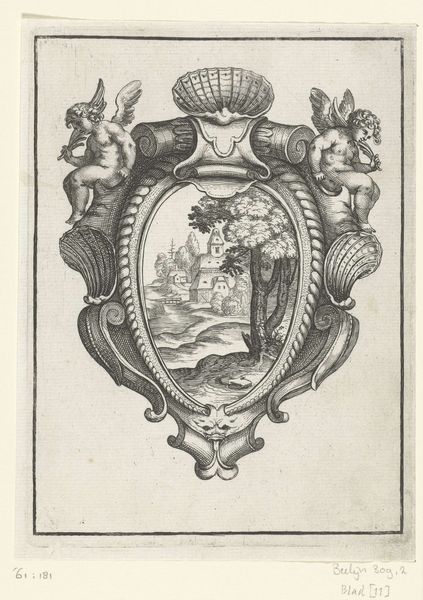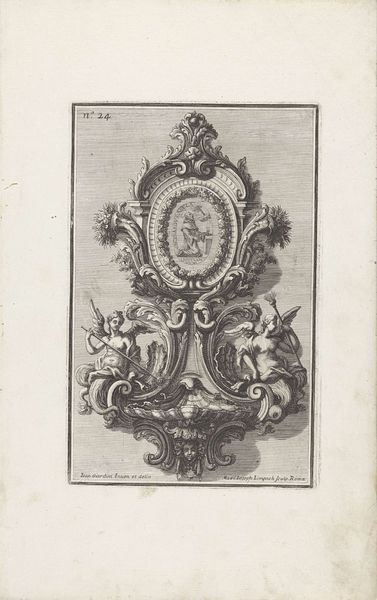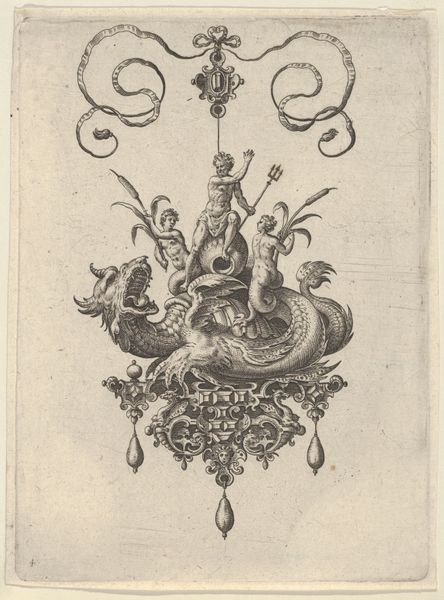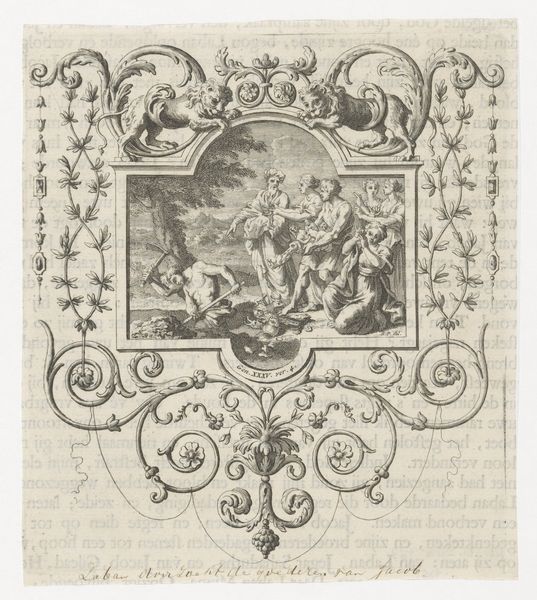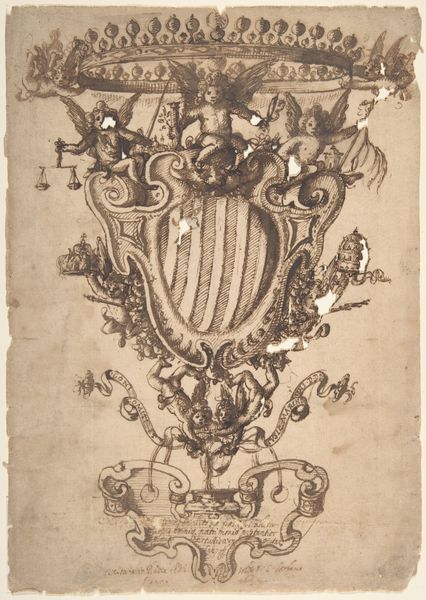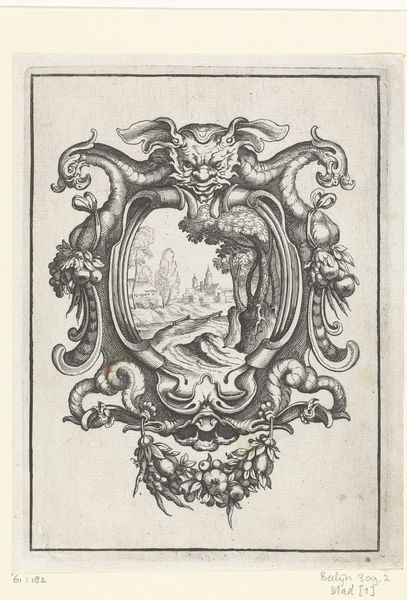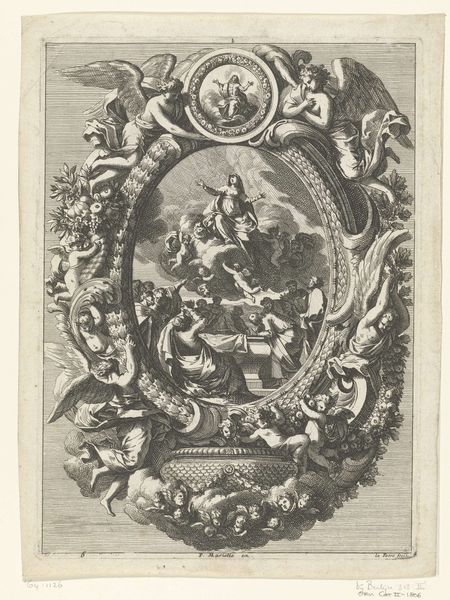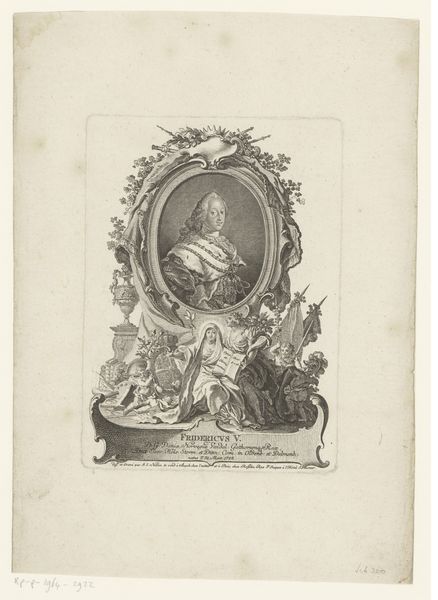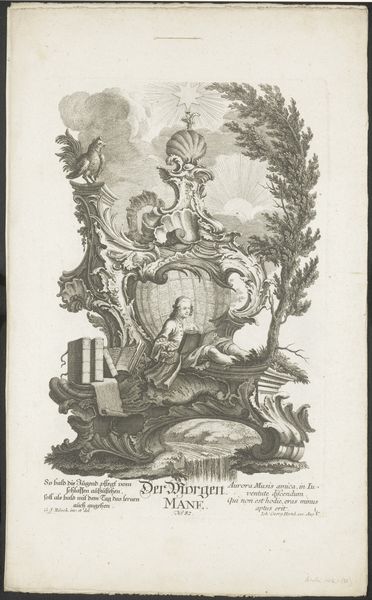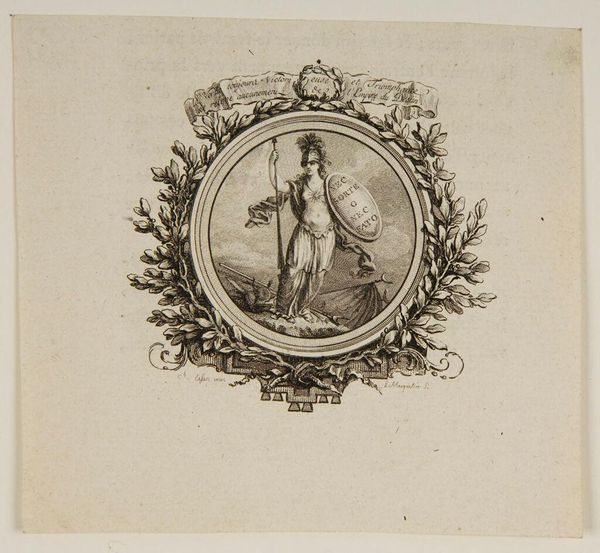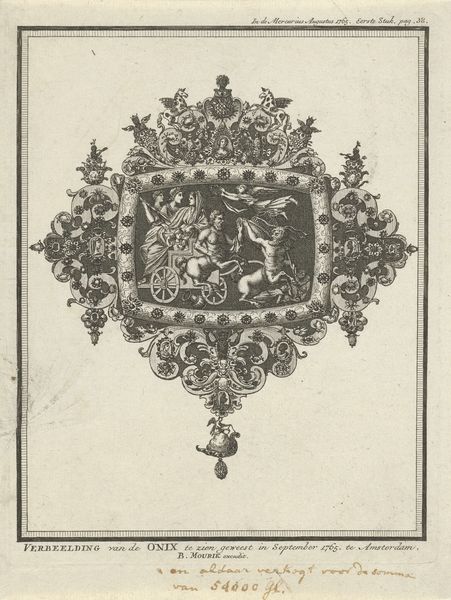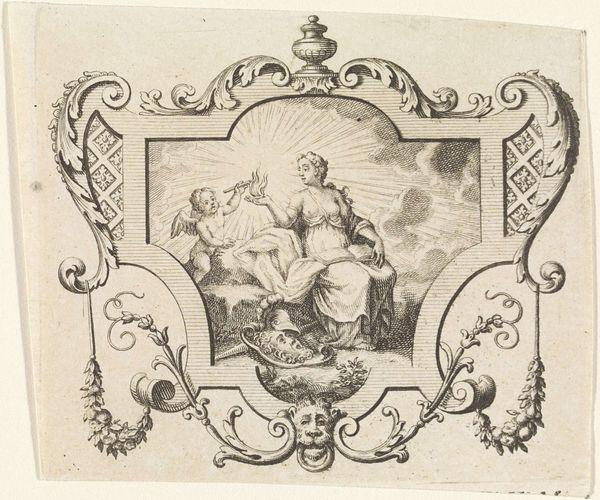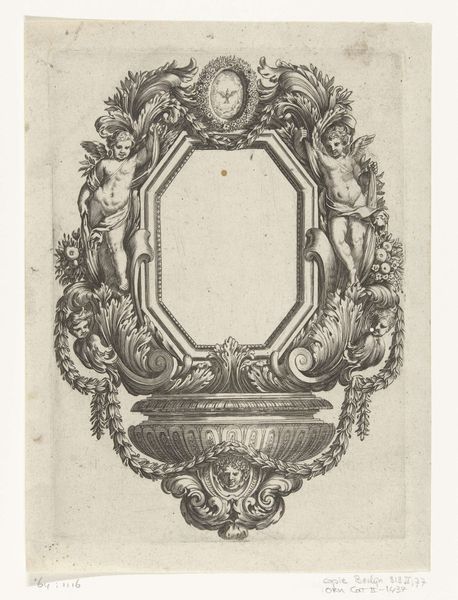
print, ink, engraving
#
allegory
#
baroque
# print
#
pen sketch
#
old engraving style
#
ink
#
ink drawing experimentation
#
pen-ink sketch
#
pen work
#
sketchbook drawing
#
engraving
Dimensions: height 135 mm, width 117 mm
Copyright: Rijks Museum: Open Domain
Editor: So, here we have François van Bleyswijck's 1722 engraving, "Apollo sitting on clouds and kneeling figure," an ink on paper work held at the Rijksmuseum. It's ornate, complex. What really jumps out at me is the use of allegory, but honestly, it's hard to know what's actually going on here. What do you make of it? Curator: This piece is a fascinating example of Baroque allegory. I see it speaking to the social structures and power dynamics of the 18th century. Who does Apollo represent in this context, and who is the kneeling figure? Is it possible this engraving critiques, perhaps subtly, those in power? The era was fraught with religious and political tension. Consider the placement of Apollo, elevated and almost ethereal, juxtaposed against the grounded, subservient figure. How does that resonate with contemporary discussions about social hierarchies? Editor: That's interesting. I was focusing on the mythology. The Apollo figure made me think more about the patronage of the arts by wealthy elites. I guess the kneeling figure *could* be society, beseeching the enlightened ruler. But why choose Apollo and not another god? Curator: Right, let's dig into the symbolism a bit deeper. Why Apollo? Well, he represents not only artistic creation, but also reason and order. In the 18th century, invoking Apollo could suggest a desire for enlightened leadership – but could also be a coded critique of excesses. Editor: So, the engraving is possibly a social commentary dressed up as mythology? That’s a far cry from just a pretty picture. Curator: Exactly. Remember that art rarely exists in a vacuum. Analyzing these images requires situating them within their historical and sociopolitical landscapes. It’s crucial to recognize these aren’t just depictions of myths, but negotiations of power, identity, and societal values. Editor: I hadn’t really considered how overtly political these mythological scenes could be. That’s changed my perspective on Baroque art considerably. Thank you! Curator: The pleasure is mine! Always remember to question what is being represented and, more importantly, *why* it's being represented in that particular way.
Comments
No comments
Be the first to comment and join the conversation on the ultimate creative platform.
